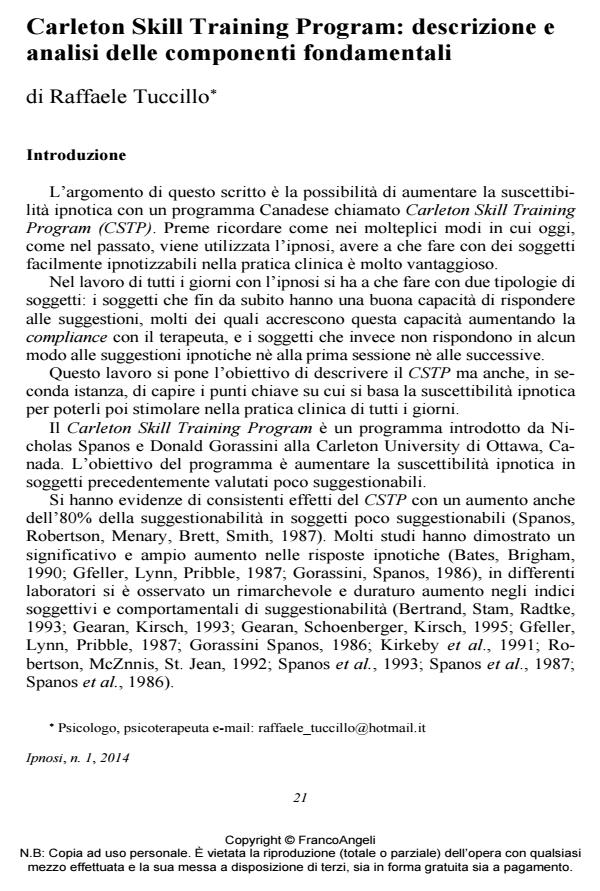Carleton Skill Training Program: descrizione e analisi delle componenti fondamentali
Titolo Rivista IPNOSI
Autori/Curatori Raffaele Tuccillo
Anno di pubblicazione 2014 Fascicolo 2014/1
Lingua Italiano Numero pagine 18 P. 21-38 Dimensione file 176 KB
DOI 10.3280/IPN2014-001002
Il DOI è il codice a barre della proprietà intellettuale: per saperne di più
clicca qui
Qui sotto puoi vedere in anteprima la prima pagina di questo articolo.
Se questo articolo ti interessa, lo puoi acquistare (e scaricare in formato pdf) seguendo le facili indicazioni per acquistare il download credit. Acquista Download Credits per scaricare questo Articolo in formato PDF

FrancoAngeli è membro della Publishers International Linking Association, Inc (PILA)associazione indipendente e non profit per facilitare (attraverso i servizi tecnologici implementati da CrossRef.org) l’accesso degli studiosi ai contenuti digitali nelle pubblicazioni professionali e scientifiche
Dealing, in clinical practice, with easily hypnotizable subjects is very useful, given the abundant use of hypnosis in various area of health care. This paper try to understand if and how is possible to increase the hypnotic susceptibility through a program called Carleton Skill Training Program (CSTP), a program oriented to low hypnotic susceptibility subjects. It investigates the theory underlying the program in order to further explicate the purposes and essential steps that make it up. Finally we debate the fundamental components of the CSTP as well as have been identified by several scholars who have studied it in order to understand the reason for his evident success.
Parole chiave:Ipnosi, suscettibilità ipnotica, Carleton Skills Training (CSTP), aspettative, teorie socio-cognitive.
- The Development and Use of the Valencia Scales of Attitudes and Beliefs Toward Hypnosis Javier Llinares-Segura, Ana Alarcón, M. Elena Mendoza, Joseph P. Green, Antonio Capafons, in International Journal of Clinical and Experimental Hypnosis /2025 pp.315
DOI: 10.1080/00207144.2025.2507720
Raffaele Tuccillo, Carleton Skill Training Program: descrizione e analisi delle componenti fondamentali in "IPNOSI" 1/2014, pp 21-38, DOI: 10.3280/IPN2014-001002